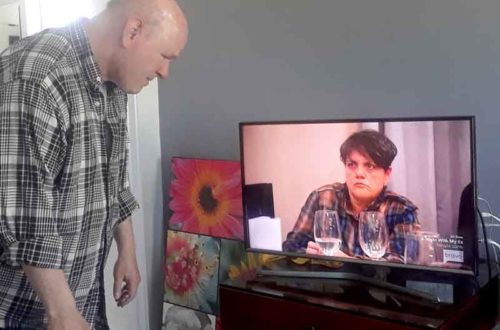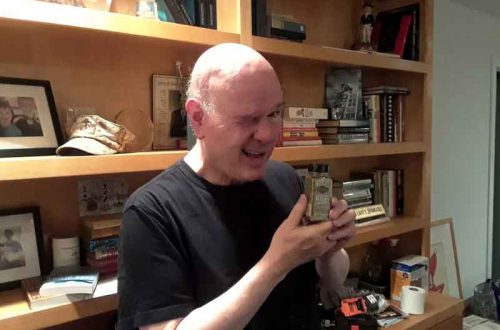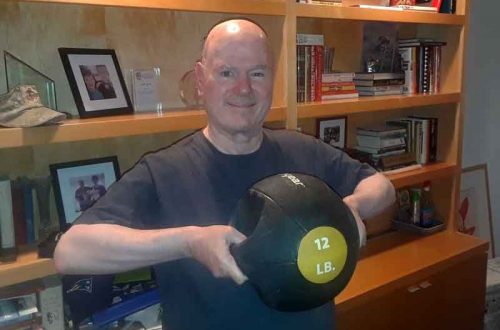The Geopolitics of Socks
Larry needs a U.N. resolution just to keep his feet warm. Yes, Larry gets into a mental logjam trying to buy some socks. Then he wonders what something is worth if you get it at a discount. Give Larry some credit. No, literally, give him some credit.
Podcast: Play in new window | Download
The battle of the safety razor blade continues. Then Larry pines for macintosh apples (the fruit, not the computer) and waxes nostalgic about Venus Paradise (the coloring set, not the strip joint near the airport).Later, we hear about Washington coming BACK across the Delaware, the little-known (by us) history of the Amazons, why the founding fathers were so high and how much Larry missed Mars. Hint — completely.
And remember, don’t trust anyone who watches an odometer.
Quote of the week: “They were giving credit cards to terrorists, but I couldn’t get one.”
Enjoy the show? Tell a friend! And check out www.larrymillerhumor.com
Or follow Larry on Twitter @larryjmiller
Show Credits
Producer: Colonel Jeff Fox
Audio Engineer: Dr. Chris Laxamana, LMDS



14 Comments
Literalmn
Grading and classification
“Pencil hardness” redirects here.
HB graphite pencils. One is labelled #2 and the other #2½
A grading chart ranging from 9B to 9H
Many pencils across the world, and almost all in Europe, are graded on the European system using a continuum from “H” (for hardness) to “B” (for blackness), as well as “F” (for fine point). The standard writing pencil is graded HB. According to Petroski, this system might have been developed in the early 20th century by Brookman, an English pencil maker. It used “B” for black and “H” for hard; a pencil’s grade was described by a sequence or successive Hs or Bs such as BB and BBB for successively softer leads, and HH and HHH for successively harder ones.[21]
As of 2009, a set of pencils ranging from a very hard, light-marking pencil to a very soft, black-marking pencil usually ranges from hardest to softest as follows:
9H 8H 7H 6H 5H 4H 3H 2H H F HB B 2B 3B 4B 5B 6B 7B 8B 9B
Hardest → Medium → Softest
Another common method uses numbers to designate the grade of a pencil. It was originally created by Conté and adopted in the United States by John Thoreau, father of Henry Thoreau, in the 19th century.[27] The following table shows approximate equivalences between the different systems:[28]
Tone U.S. World
#1 B
#2 HB
#2½ * F
#3 H
#4 2H
* Also seen as 2-4/8, 2.5, 2-5/10
Although Conté/Thoreau’s system is widely accepted, not all manufacturers follow it; for example, Faber-Castell uses a different equivalence table in its Grip 2001 pencils: 1 = 2B, 2 = B, 2½ = HB, 3 = H, 4 = 2H.
The various graphite pencil grades are achieved by altering the proportion of graphite to clay: the more clay the harder the pencil.[29][30][31] Two pencils of the same grade but different manufacturers will not necessarily make a mark of identical tone nor have the same hardness.[32]
LarryE
I like the macintosh apples, too. Macintosh, Jonathan, or Rome — those are the 3 permissible apples, for me.
state your name
Uhhh… you know what? I love Larry- we all love Larry, but… maybe the extreme close-up photo where you can count the pores on Larry’s nose… not the greatest idea.
Phil Gullett
Re: Pencils
Yep. The “B-ness” or “H-ness” of a pencil describes how it writes and draws. Any artist will have strong opinions about their ideal hardness of lead and the best manufacturer. I come from a cartoon background, and all my animator friends have a favorite.
2B is a nice, soft, general use lead that writes smoothly without too much smearing. Soft pencils smear, but give a nice dark line. Hard pencils don’t smear but tend to look a little pale on the paper. My favorite for drawing is a Japanese brand called Tombow in 2B softness. The lead feels buttery smooth as it goes onto the paper, without being so soft that it breaks too much. It smears a little, but if you watch where you rest the heel of your hand and plan which part of the drawing you fill in first, you’ll be all right.
As animators, we were taught to work the lead into a chisel shape. This lets you rotate the pencil to get a thick or thin line as desired. Good animators will vary the weight of the line as they draw a character. This helps the drawing feel dimensional even before the color goes in.
pg
big jim
I’m more a Golden Delicious man myself, but hey, God bless.
Paul
Hey Larry!!! You used the term “Happy as a clam” These terms drive me crazy because how do you know that a clam is happy? Where to these sayings come from? Like “more fun than a barrel of monkeys” Well how much fun is a barrel of monkeys? How do you keep them in the barrel? “You don’t know me from Adam”
Well my name isn’t Adam. Where do these come from? Any more examples?
Grant Young
zzz
stnuntrnd
Joke of the Week was, as usual, followed by thorough explanation, to people who got the joke. That’s just part of why the TWWLM podcast is such a pleasure.
Eric
Don’t know where you buy your hammers, but a high quality, made in America framing hammer is north of $100. It’s almost jewelry!
Jason
The Amazon River got its current name from Francisco de Orellano, a lieutenant of Gonzalo Pizarro. He accompanied Pizarro on an expedition into current day Ecuador in search of gold in 1541 and in late December reached the convergence of 2 rivers, one of which was the Amazon. With food very scarce, Orellano was given 12 days to search for food downriver and return. Pizarro never saw Orellano again, as Orellano had to deal with a strong current, scarce supplies, hostile natives, and disease on his journey, and he ended up traveling the entire length of the Amazon River rather than struggle to return upstream. Orellano must have known the Greek myth of the Amazons, because he named the river after a group of Brazilian warriors he encountered comprised entirely of women.
Upon reaching the Atlantic, Orellano decided to return to Europe. Pizarro accused him of treason, but a court threw out the charge.
donewithidiots
Good stuff. Just sent off for my martini card.
LarryE
Golden Delicious are good, if they’re really ripe. But they color them or dye them so often, you can’t tell, so you can’t trust ’em.
Wil
I wanted to touch on the sock “slave” labor issue. My view on the sock thing is very libertarian.
In the USA everyone is concerned with how we feel about things. Well seeing children starving and working at a factory is never going to make you feel good. What you are not being told is what the alternative is for these people.
Many people want to boycott the products that employ cheap labor. This is purely based on how they feel about the practice. Think about it for a moment, if that product doesn’t get sold there will be no money to pay the workers, and that factory will be shut down. What work would these people have to fall back on? None.
The solution I come up with is actually the opposite. I say buy these products and you help those markets grow. As the market develops and improves so will the living conditions of those people. It is not a fast change so its hard for many people to process. The same type of process has happened in every first world nation, and some have started the reverse process.
John Stossel did a piece somewhat related to this
http://youtu.be/ZO2-XRQ4r-0
cigaRhett
For me, nothing beats a Honeycrisp. Growing up in Washington state (the apple capital of America), there are many types of apples in the store, but they all pale in comparison.
A Honeycrisp is sweet, juicy, crispy, and firm. Just fantastic.
It’s a rich man’s apple, but definitely worth the price.
Fuji apples are great too, and a bit cheaper, but a distant second place.